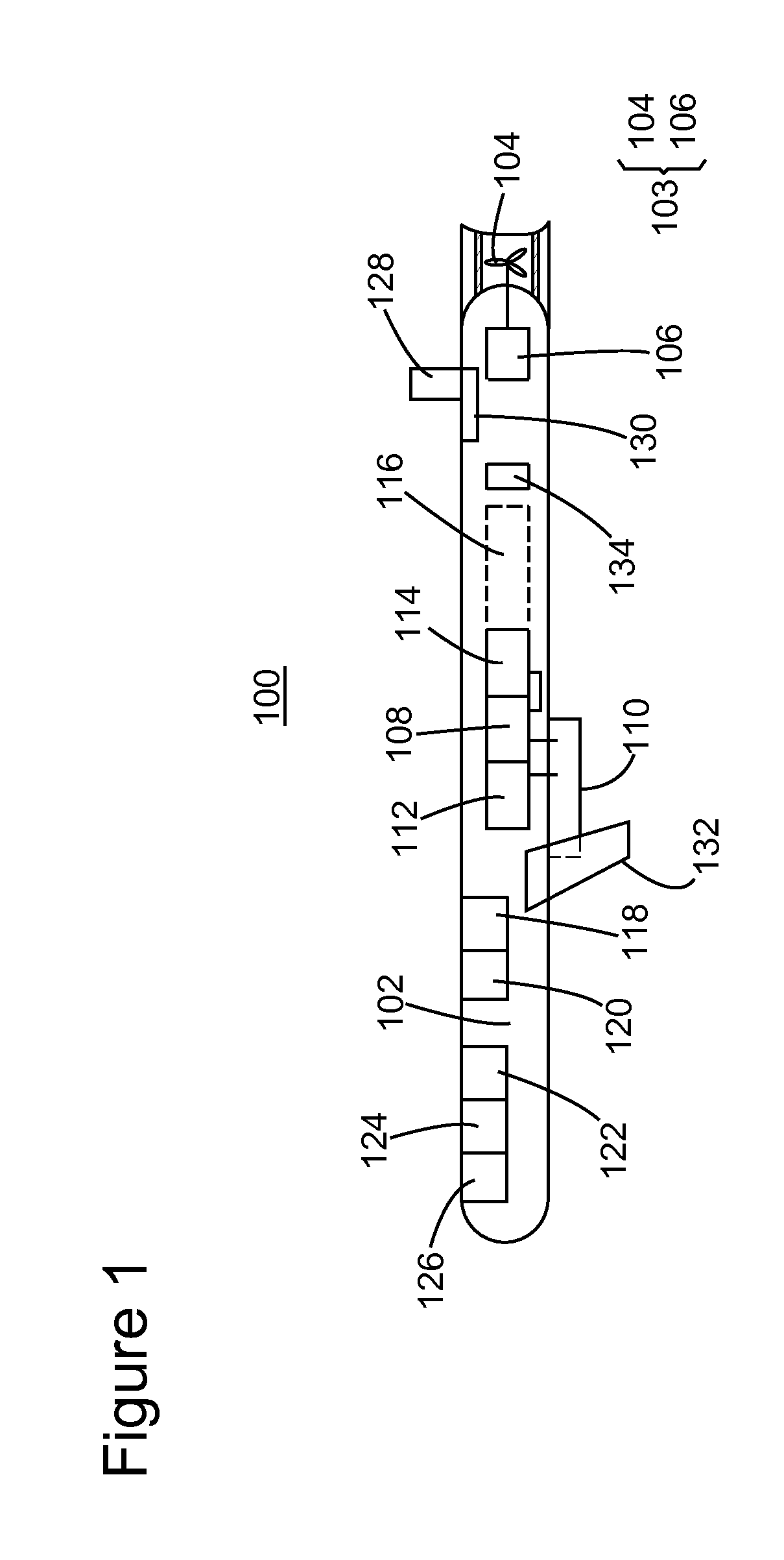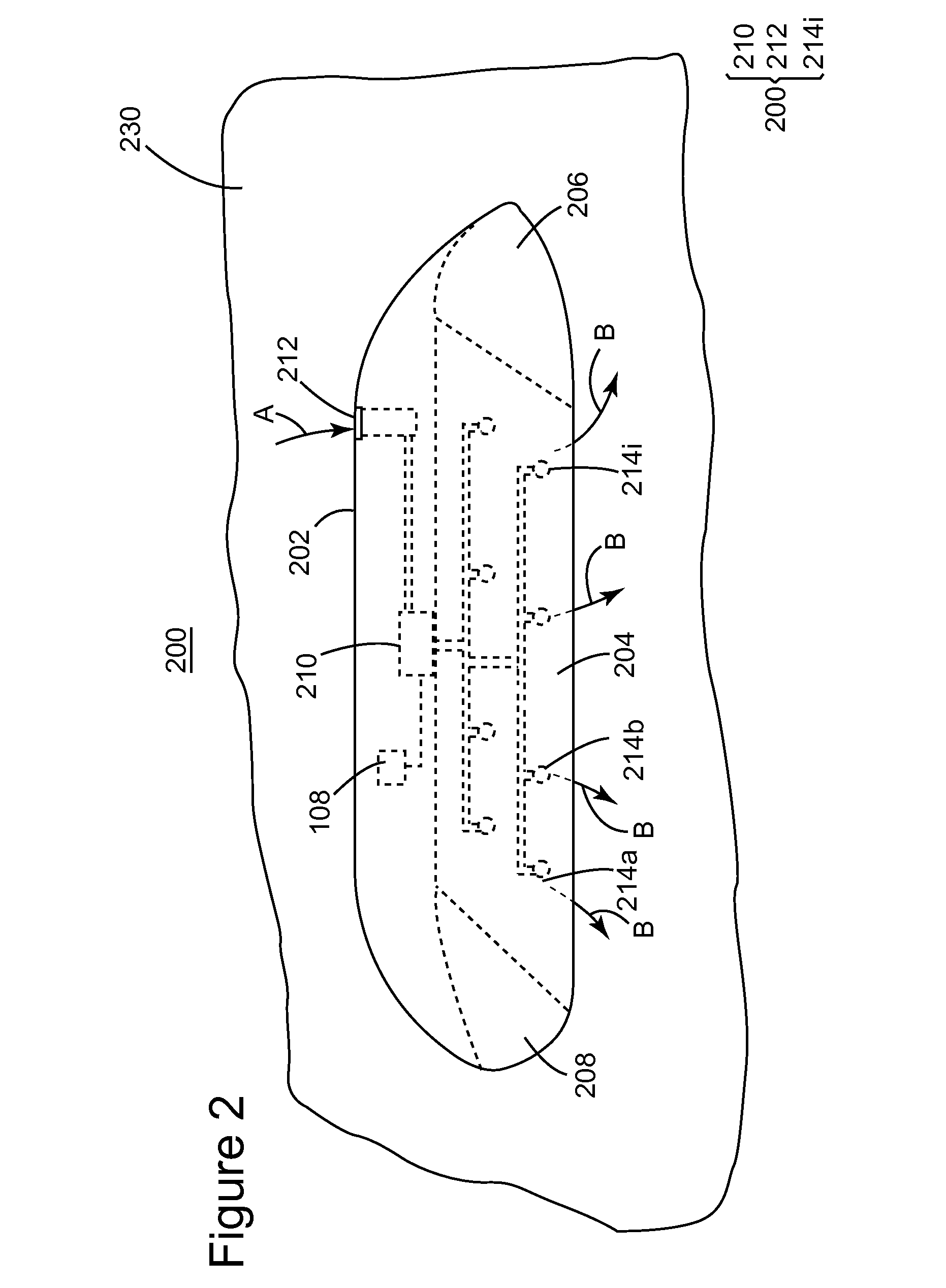Self-burying autonomous underwater vehicle and method for marine seismic surveys
a technology of autonomous underwater vehicles and marine seismic surveys, which is applied in the direction of seismology, propulsive elements, geological measurements, etc., can solve the problems of high cost of streamers, difficult positioning of seismic sensors, and high cost of traditional configuration
- Summary
- Abstract
- Description
- Claims
- Application Information
AI Technical Summary
Benefits of technology
Problems solved by technology
Method used
Image
Examples
Embodiment Construction
[0026]The following description of the exemplary embodiments refers to the accompanying drawings. The same reference numbers in different drawings identify the same or similar elements. The following detailed description does not limit the invention. Instead, the scope of the invention is defined by the appended claims. The following embodiments are discussed, for simplicity, with regard to the terminology and structure of an AUV having one or more seismic sensors. However, the embodiments to be discussed next are not limited to AUVs, but may be applied to other platforms (e.g., glider, buoy, node etc.) that may carry seismic sensors. Note that an AUV may encompass a traditional seismic node that has a propulsion system and can autonomously travel from one point to another.
[0027]Reference throughout the specification to “one embodiment” or “an embodiment” means that a particular feature, structure or characteristic described in connection with an embodiment is included in at least o...
PUM
 Login to View More
Login to View More Abstract
Description
Claims
Application Information
 Login to View More
Login to View More - R&D
- Intellectual Property
- Life Sciences
- Materials
- Tech Scout
- Unparalleled Data Quality
- Higher Quality Content
- 60% Fewer Hallucinations
Browse by: Latest US Patents, China's latest patents, Technical Efficacy Thesaurus, Application Domain, Technology Topic, Popular Technical Reports.
© 2025 PatSnap. All rights reserved.Legal|Privacy policy|Modern Slavery Act Transparency Statement|Sitemap|About US| Contact US: help@patsnap.com



